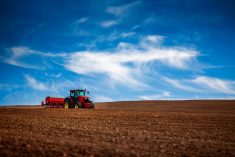Are job descriptions worth the effort? Simply put, the experts say the answer is a clear yes. Or maybe we should make that YES! Job descriptions are foundational for good management, says Jade Reeve, manager of agri-jobs at the Canadian Agricultural Human Resources Council (CAHRC) in Ottawa.
Their usefulness goes beyond recruitment, she adds. “They can also be used as the basis for performance management, training and development, and retention.”
They will also tell prospective employees a lot about the farm they’re joining, says Terry Betker, management consultant with Backswath Management in Manitoba. This is especially important with the current labour shortage. “Good candidates have options. If you look well-organized and well-managed, you’re putting your best foot forward,” Betker says. “If there is a clear job description, good candidates are more likely to choose your farm.”
Read Also

Are you ready for farm succession?
What motivates some farmers to make a succession plan while others don’t seem worried.
Generally speaking, a job or position description defines the tasks, duties, responsibilities, working conditions, competencies, education, experience, knowledge, and other requirements necessary for success in a position. It can also include who the employee reports to, the level of supervision involved, and performance expectations.
Reeve says performing a detailed analysis of the job requirements will help ensure that you hire someone with the necessary qualifications. Some key questions include: Is a driver’s license required to do the job? Is WHMIS, first aid or biosecurity training required? Does the employee need to be able to lift more than 20 pounds? Will the person be working alone?
Unless you think through what’s required to do the job, there is a tendency to overlook some of the basic tasks, says Reeve.
Listing the working conditions in the job description can be particularly important in the agriculture sector. Is the job physically demanding? Is it weather dependent? “By setting the tone for the position, the new hire will be more prepared to do all that’s required for the job, which helps with retention,” says Reeve. With fewer surprises for employees, there will be less staff turnover.
It means both the employee and the employer will have more than a gut feeling to go by, adds Reeve.
Job descriptions can also be used as an HR management tool. By documenting all the tasks necessary to do the job, you will be able to see where the employee needs more training, says Reeve, noting it can also help you see when a person has outgrown their position and is ready for new challenges.
Betker says the job description can also tie into compensation. If an employee wants an increase in pay, they can see what added responsibilities they must take on to move up to a higher pay level.
Too often farmers may think they don’t need to bother with a job description because they “just need a body,” says Reeve. However, it takes time to go through the hiring process, and creating a job description will help you find the person with the best fit, she says. “It’s easier to retain people if you match the person to the tasks,” she says, adding that you’re less likely to have to let them go and start the hiring process all over again.
The process of writing the job descriptions is almost as valuable as the document itself, says Betker. Even small farms with only family members for employees would benefit from creating job descriptions, he says.
You’ll also find that the discussions that take place when you define roles are very helpful, says Betker. As you think about what tasks the employee will perform and how that relates to what else is going on, it brings clarity to “who is doing what and who should be,” he explains. As an added bonus, going through the process of creating a job description improves communication, which is always a good thing.
During an intergenerational transition, job descriptions are especially useful, says Betker. They clarify the roles and responsibilities of the different generations and the chain of command. “What area of responsibility is the senior generation going to pass on to the next generation? There’s huge value in these discussions as to how it’s going to work,” he says.
This also applies when a new member joins the farm family via marriage. Job descriptions can help bring clarity to the added complexity of the farm management structure.
And with clarity comes accountability, Betker continues. “It gets away from the ‘I didn’t know that was my job’ problem,” he explains.
If you are worried that writing job descriptions will take a lot of time, Betker insists they do not need to be fancy. Even a basic one will do, he says.
There are many resources available to help you create an accurate job description. This may involve observing workers performing their jobs, having workers fill out logs to track the tasks they perform, interviewing workers about their jobs, or interviewing workers’ supervisors.
To make it easier for farmers to develop job descriptions, CAHRC has created templates for more than 60 agricultural jobs for 16 commodity types. According to CAHRC, “these job descriptions use a consistent way to describe and understand job requirements, and they provide detailed information about the work that needs to be performed in specific roles and occupations in the agriculture sector.”
The CAHRC job descriptions were developed by consulting with farmers across the country, says Reeve. The templates can be used as a starting point and then customized for your farm’s specific needs. There are also plans to add more job descriptions to cover additional occupations in the ag sector.
Job descriptions are a valuable long-term investment in your farm operation, says Reeve. They are an important HR tool, she says, and can be reused the next time you are hiring for that position.
Resources
The Canadian Agricultural Human Resources Council (CAHRC) has created templates for more than 60 agricultural jobs for 16 commodity types as part of its HR Tool Kit. A one-year subscription is $99 + applicable taxes.
















